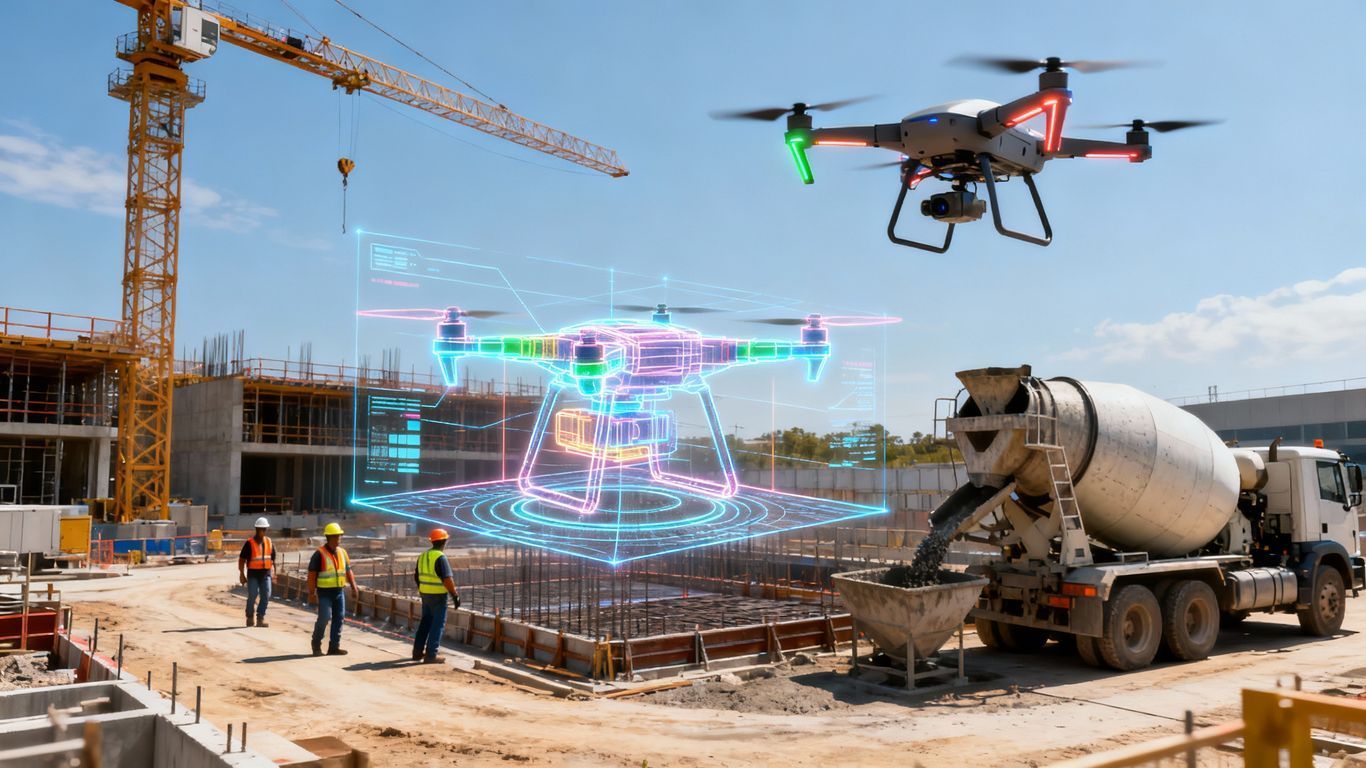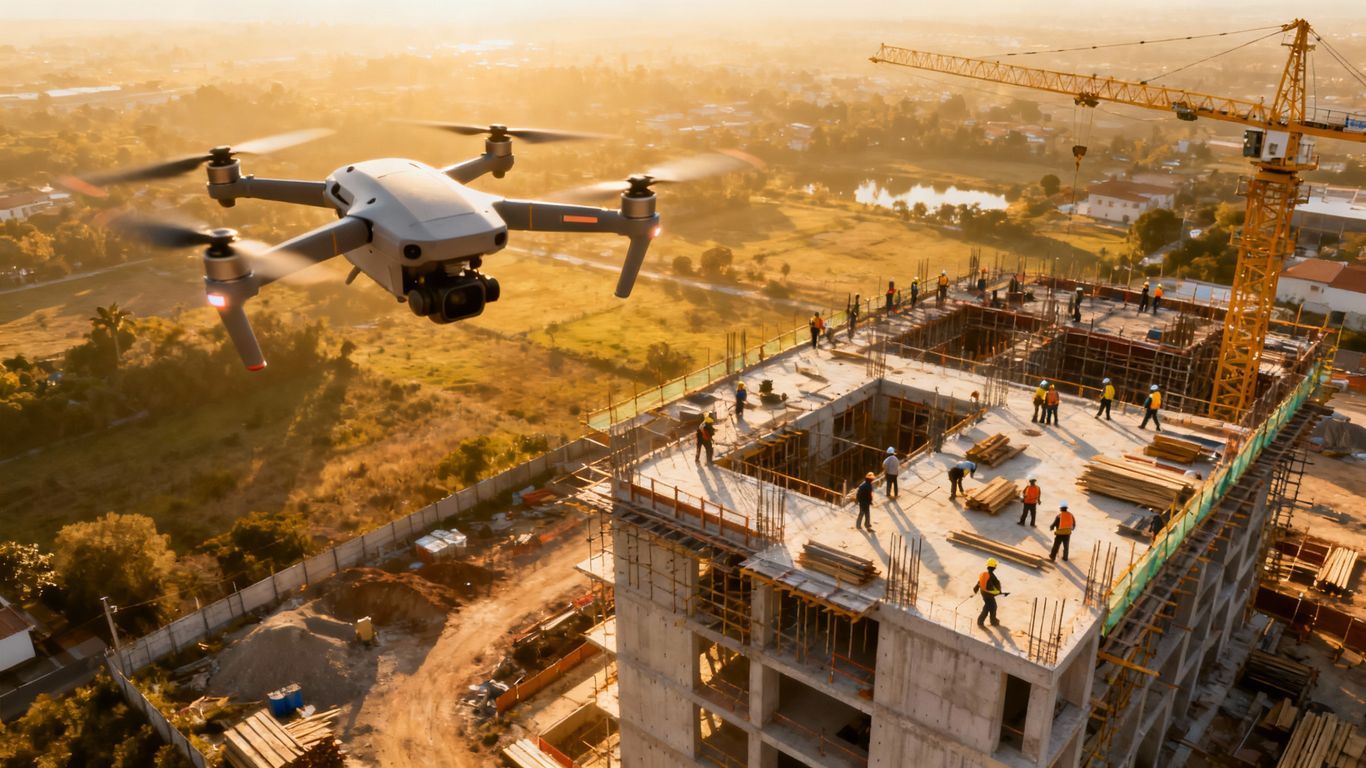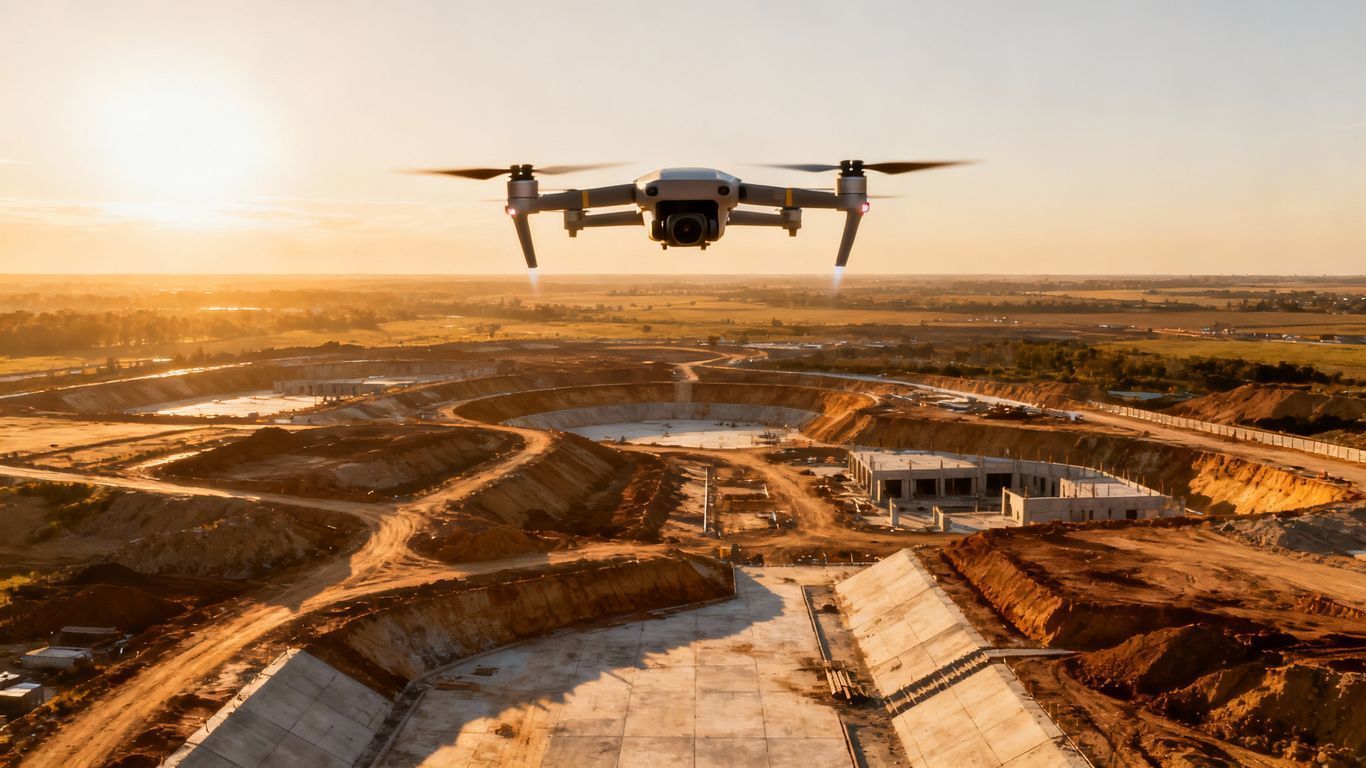8 Businesses That Thermal Drone Services Can Help
Thermal drone services are changing the game for businesses across industries.
These high-tech flying machines equipped with heat-sensing cameras offer a fresh perspective on operations, maintenance, and safety.
But what exactly can they do for you?
In this post, we'll explore the many ways thermal drone services can benefit various businesses.
We'll look at real-world applications, discuss the advantages over traditional methods, and help you understand if these services might be right for your needs.
We'll cover everything from solar panel inspections to drone deer recovery.
Ready to view your Columbus, OH project from new heights?
Contact 1st Choice Aerials today to schedule your aerial photography, inspection, or thermal imaging service!
On This Page:
What Are Thermal Drone Services?
Thermal drone services utilize
unmanned aerial vehicles (UAVs), commonly known as drones, equipped with specialized
thermal imaging cameras.
These drones are operated by skilled thermal drone pilots.
The core function is to detect and visualize heat signatures and differences in temperature across surfaces & objects.
This capability allows the drone system to perceive variations invisible to the naked eye.
The thermal cameras, central to thermal imaging services, can often detect temperature differences as small as a fraction of a degree Celsius.
This high sensitivity makes thermal drones incredibly useful for a wide array of data collection tasks.
Industries Benefiting from Thermal Drone Services
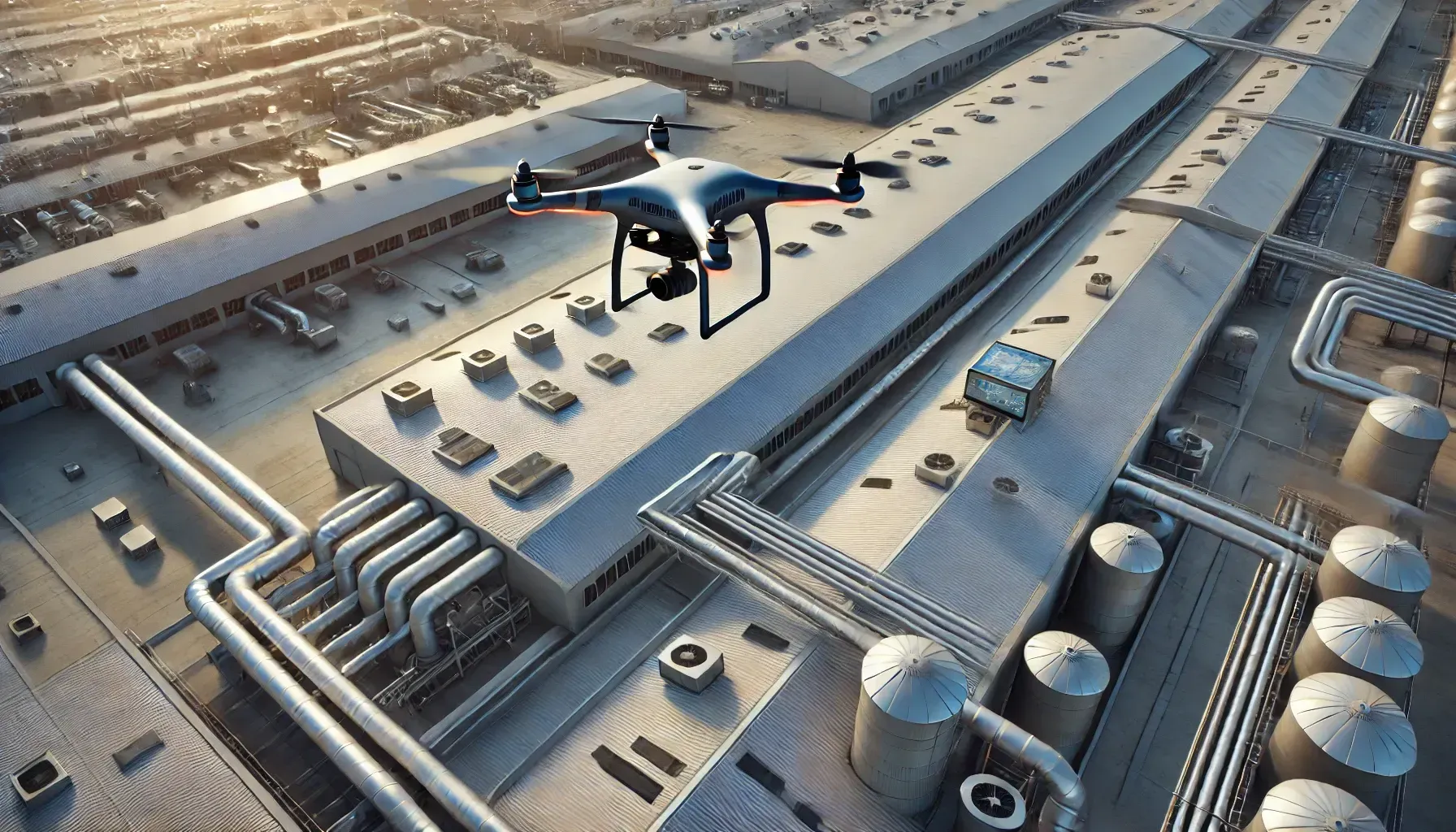
A growing number of industries are integrating thermal drone technology into their workflows.
The ability to detect heat patterns provides critical information for maintenance, safety, and efficiency.
Let's explore some key sectors where these services are making a significant impact.
1. Construction and Building Inspection
In the
construction sector, thermal drones are proving indispensable.
They can rapidly scan building envelopes to identify areas of significant heat loss or gain.
This helps pinpoint problems with insulation, air leaks around windows and doors, or thermal bridging.
Furthermore, these drones excel at detecting moisture intrusion within roofing systems or walls long before visible signs appear.
Early detection of water damage, facilitated by thermal imaging services, can prevent widespread structural issues and costly repairs.
Identifying potential issues early reduces overall project and maintenance costs.
For large commercial buildings or extensive housing developments, thermal drones survey entire structures quickly.
This process is far faster and often safer than manual inspection methods requiring scaffolding or lifts.
Data analysis also helps prioritize repairs effectively.
2. Agriculture
Farmers increasingly use thermal drone services to monitor crop health across vast fields.
Temperature variations in plant canopies can indicate stress from dehydration, disease, or pests.
This aerial data allows for targeted interventions, saving resources.
Thermal imaging technology assists in optimizing irrigation strategies.
By identifying precisely which areas of a field are drier than others, farmers can apply water more efficiently, conserving water and improving crop yields.
This precision agriculture approach is becoming more common.
Beyond crops, these services help locate livestock dispersed over large pastures, especially in low-light conditions or dense vegetation.
This simplifies herd management and reduces the time needed for animal counts or locating strays.
An efficient location can be crucial for animal welfare.
3. Firefighting and Emergency Services
During emergencies, thermal drones are invaluable assets.
Firefighters use them to identify hotspots within wildfires or structure fires, even through dense smoke.
This intelligence helps commanders allocate resources more effectively and safely.
In search and rescue missions, thermal drones dramatically improve the chances of finding missing persons.
They can detect a human heat signature in challenging environments like forests, collapsed buildings, or even at night.
Faster detection is critical in
life-or-death situations.
Following a fire, thermal imaging services can assess the structural integrity of damaged buildings from a safe distance.
This helps determine if a structure is safe for entry by emergency personnel or residents.
It provides crucial information for incident commanders.
4. Energy Sector
The energy industry heavily relies on thermal drone services for maintenance and inspection.
They are used for routine solar panel inspections, quickly identifying defective cells or connections that appear hotter than surrounding panels.
Early detection prevents power loss and potential fire hazards.
Thermal drones inspect vast networks of power lines for overheating components, loose connections, or failing transformers.
Similarly, they can detect leaks in oil and gas pipelines by identifying temperature anomalies caused by escaping gas or fluid.
These panel inspections and pipeline checks enhance safety and reliability.
For wind farms, drones equipped with thermal cameras inspect turbine blades for subsurface structural defects, delamination, or erosion.
Performing these inspections with drones avoids the dangerous and time-consuming process of rope access technicians.
Efficient inspections minimize downtime and maintain energy production.
5. Security and Surveillance
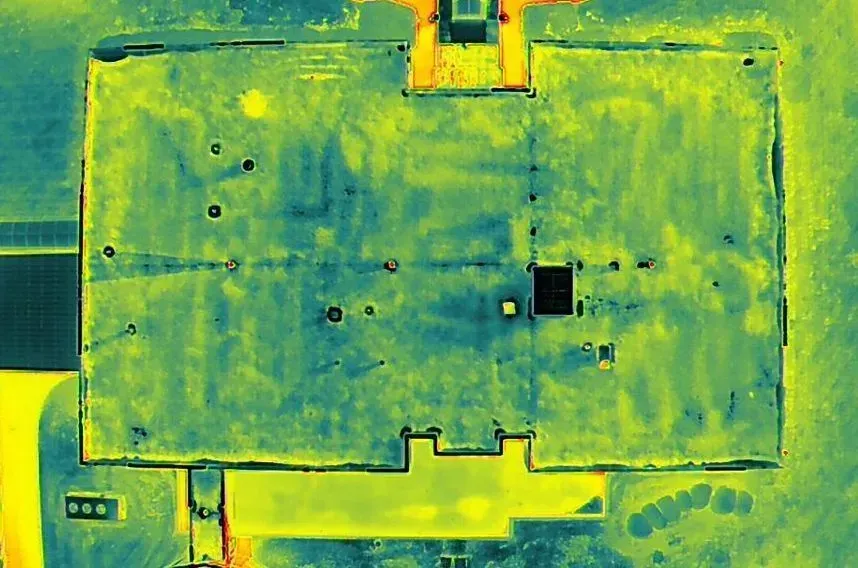
Thermal drones offer powerful capabilities for security operations.
Their ability to detect heat signatures makes them highly effective for spotting intruders in complete darkness, fog, or light camouflage.
This provides a significant advantage for perimeter security.
For securing large areas such as industrial sites, critical infrastructure, or large public events, thermal drones provide comprehensive aerial surveillance.
They offer persistent monitoring capabilities, enhancing ground security measures and helping security teams respond proactively to potential threats.
Aerial video feeds provide real-time situational awareness.
Law enforcement agencies increasingly deploy thermal drone services for various tactical operations.
This includes tracking suspects fleeing on foot, monitoring crowd dynamics during protests or large gatherings, and providing overwatch for officers during high-risk situations.
This technology aids personnel safety and operational success.
6. Wildlife Management & Recovery
Thermal drone services are becoming essential tools in wildlife conservation and management.
Biologists use them to conduct population surveys of various species, especially nocturnal animals or those in dense habitats.
This aerial data collection is often more accurate and less intrusive than ground-based methods.
In hunting communities, thermal drones are ethically used for
drone deer recovery services.
After a shot, if a hunter has difficulty locating downed game, a thermal drone service can be employed to discover downed animals quickly, especially in challenging terrain or low light.
This helps ensure ethical harvesting and prevents loss of game - finding deer fast is a major benefit.
These recovery services are crucial for finding wounded animals that might otherwise suffer or be lost.
Licensed drone pilots specializing in drone deer recovery use thermal imaging to locate the heat signature of the animal.
Many offer specialized deer recovery services during hunting seasons.
7. Infrastructure Inspection
Beyond buildings and energy assets, thermal drones are valuable for inspecting other types of critical infrastructure.
They can assess the condition of bridges, looking for delamination in concrete decks or temperature anomalies indicating potential structural issues.
This complements visual inspections.
Thermal imaging services assist in monitoring roads and railways.
They can identify subsurface voids under pavement, detect heat variations indicating issues with railway components, or assess the condition of retaining walls.
Early detection prevents larger failures.
Cell tower inspections are another key application.
Drones equipped with thermal cameras can check electrical components, connections, and backup systems for overheating, reducing the need for dangerous manual climbs.
Tower inspections performed by drone are also faster and safer for maintenance crews.
8. Real Estate
The real estate sector is finding applications for thermal drone photography and inspection.
Thermal imaging can highlight energy inefficiencies in a home, such as poor insulation or drafty windows, providing valuable information to potential buyers or sellers.
This adds a layer of transparency to transactions.
Commercial real estate benefits immensely from thermal roof inspections.
Identifying moisture problems or insulation defects before a sale can prevent costly disputes later.
Providing a thermal inspection report can be a strong selling point.
Advantages of Thermal Drone Services
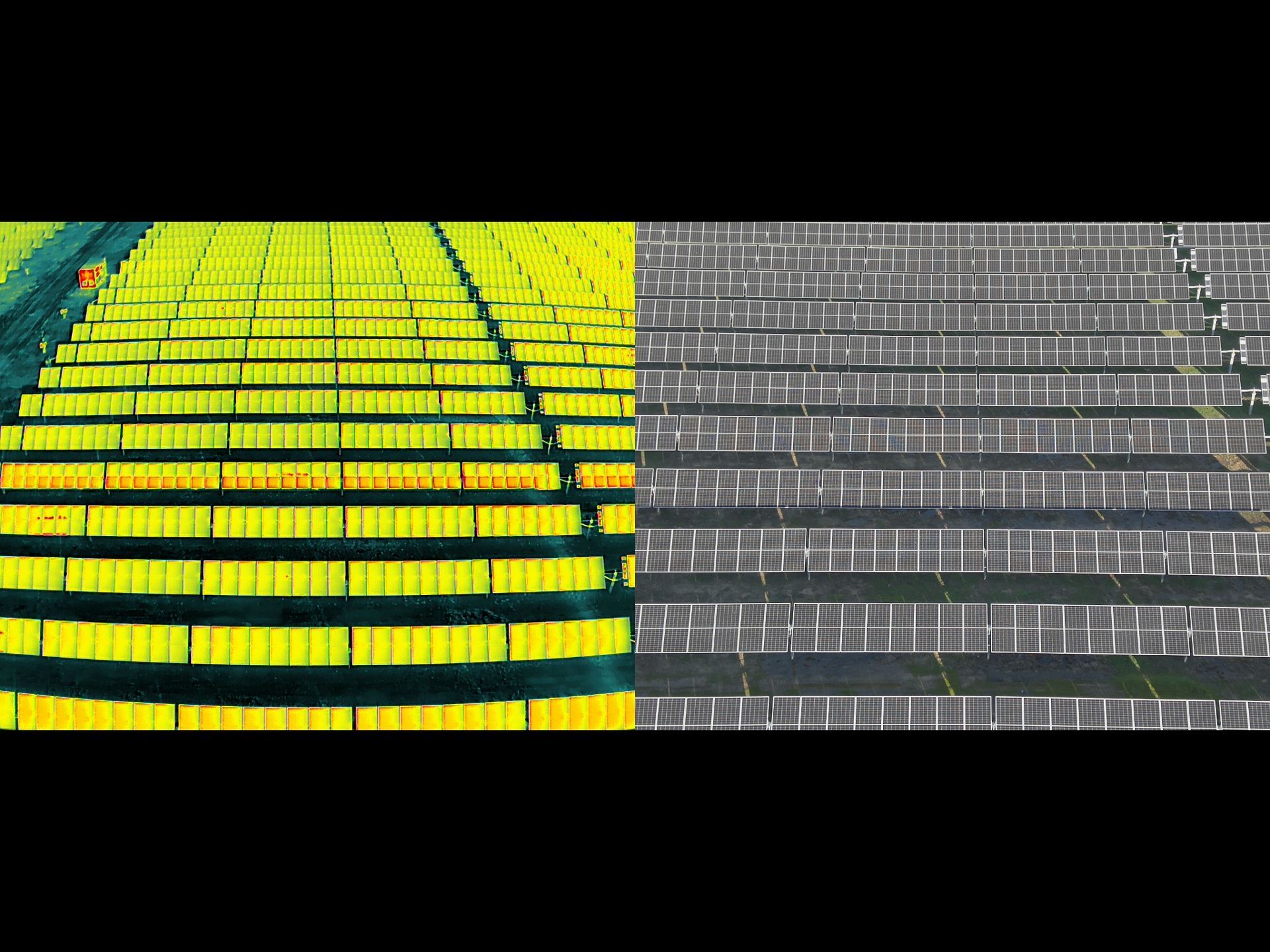
Employing thermal drone services offers several compelling advantages over traditional methods across various applications.
These benefits often translate directly into improved efficiency, safety, and financial outcomes.
Let's look at the key advantages.
1. Cost-Effective
While professional thermal drone services involve costs, they often result in significant long-term savings compared to conventional approaches.
Tasks like large-scale roof inspections, solar farm checks, or extensive wildlife surveys can be completed much faster, reducing labor hours and associated costs.
Lower operational costs are a frequent outcome.
Consider the expense of scaffolding, lifts, or helicopter rentals for certain inspections.
Thermal drones eliminate many of these costs entirely.
The reduction in equipment rental, labor time, and potential downtime for facilities during inspection leads to substantial savings.
2. Improved Safety
One of the most significant benefits of using thermal drone services is the enhancement of workplace safety.
Drones can access dangerous or difficult-to-reach locations, such as high roofs, energized power lines, unstable structures, or active wildfire zones, without risking human lives.
This is crucial for tasks like cell tower inspections.
In industries like construction, energy, and emergency response, utilizing drones for inspections minimizes the need for personnel to work at heights, near hazardous materials, or in unstable environments.
This directly reduces the potential for falls, electrocutions, or exposure-related injuries.
For first responders, assessing a situation with a thermal drone before sending personnel into potentially hazardous areas provides critical situational awareness.
This capability protects firefighters, police officers, and search and rescue teams by allowing them to make more informed, safer decisions.
Identifying potential issues from afar is invaluable.
3. Enhanced Accuracy and Data Quality
Thermal cameras used in drone services can detect minute temperature differences, offering a level of detail often impossible to achieve with the naked eye or standard cameras.
This precision allows for highly accurate inspections and diagnostics, identifying subtle anomalies that indicate underlying problems.
This detailed aerial data supports better decision-making.
Thermal imaging provides objective, measurable data.
Temperature readings can be recorded and analyzed, providing quantifiable evidence of issues rather than subjective visual assessments.
This data analysis leads to more reliable reporting and targeted repair strategies.
4. Time-Saving
Thermal drone services dramatically reduce the time required for many inspection and survey tasks.
A drone can cover large areas like agricultural fields, solar farms, or extensive building complexes in a fraction of the time needed for manual ground surveys or inspections.
The average search time for issues is significantly reduced.
Consider searching for downed game in dense woods; a thermal drone can locate deer fast compared to hours of searching on foot.
Similarly, inspecting miles of pipeline or hundreds of wind turbines is vastly accelerated using drones.
This speed is crucial in time-sensitive operations.
Comparing Inspection Methods
To better understand the benefits, let's compare traditional methods with thermal drone services for a common task like commercial roof inspection:
| Feature | Traditional Manual Inspection | Thermal Drone Inspection |
|---|---|---|
| Time Required (Large Roof) | Days | Hours |
| Safety Risk | High (Working at height) | Low (Remote operation) |
| Detection Capability | Surface-level visible issues | Subsurface moisture, insulation gaps, and heat loss |
| Data Format | Notes, standard photos | Thermal images, radiometric data, standard photos, and aerial video |
| Objectivity | Subjective assessment | Objective temperature data |
| Cost | High labor costs, potential lift rental | Lower operational costs, faster completion |
This comparison highlights how thermal drone imaging services provide a more efficient, safer, and comprehensive approach for tasks like roof inspections.
Similar advantages apply across other industries and applications.
Challenges and Considerations
While the benefits are substantial, implementing thermal drone services involves certain challenges and considerations.
Navigating regulations surrounding commercial drone operation is essential; operators must be commercially licensed and adhere to local airspace rules.
A clear understanding of the relevant privacy policy implications is also important when flying over private property.
Weather conditions can impact drone flights.
High winds, heavy rain, or extreme temperatures might restrict operations, potentially causing delays in scheduled inspections or emergency deployments.
Flight planning must account for weather forecasts and potential issues.
Choosing a Thermal Drone Service Provider
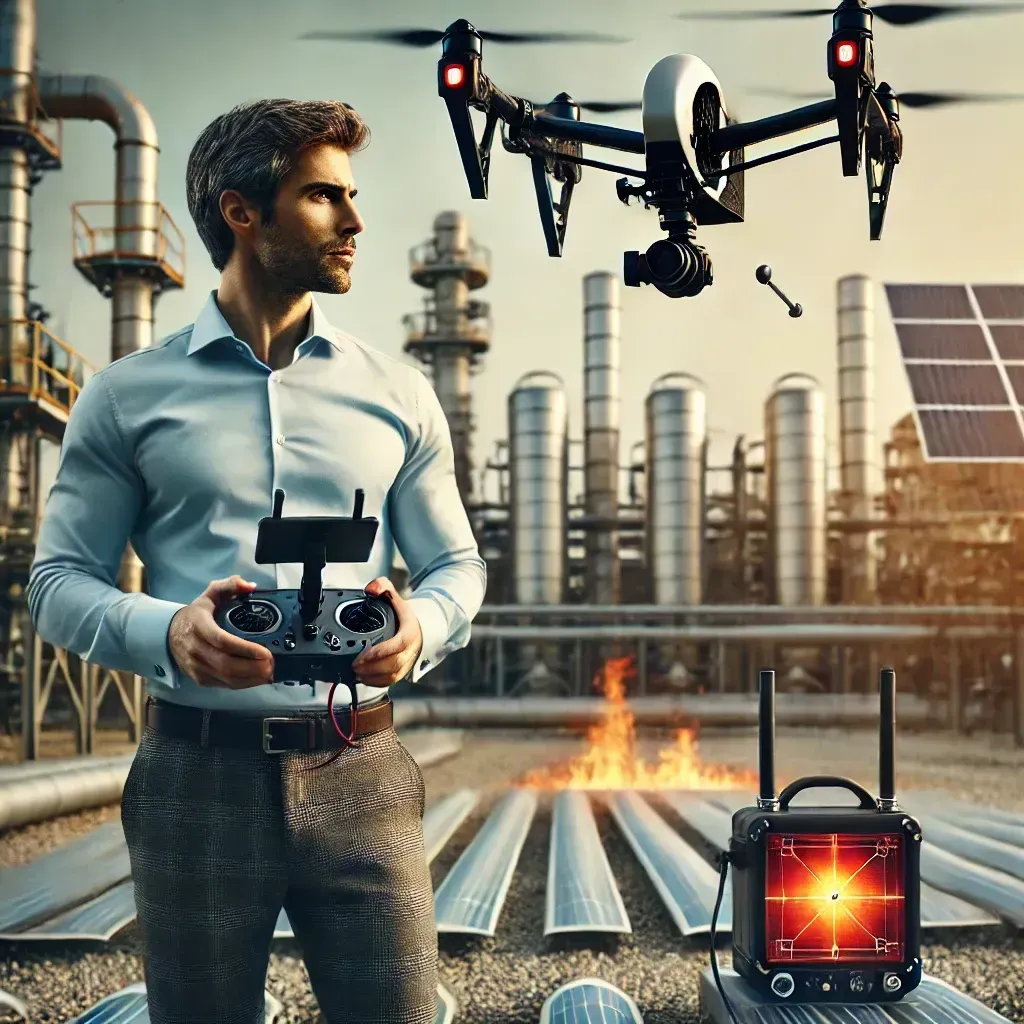
Selecting the right provider for thermal drone services is critical to achieving a positive experience and reliable results.
Look for companies with experienced, certified thermal drone pilots.
Verify they are commercially licensed by the relevant aviation authority (e.g., FAA in the US).
Inquire about their experience in your specific industry or application, whether it's solar panel inspections, building diagnostics, or drone deer recovery services.
Reviewing their success stories or case studies can provide insight into their capabilities.
Easy communication and transparency are signs of great service.
The Future of Thermal Drone Services
The field of thermal drone services is constantly advancing, driven by improvements in drone technology, sensor capabilities, and software analytics.
Battery technology is improving, allowing for longer flight times and coverage of larger areas per flight.
Thermal cameras are becoming smaller, lighter, and more sensitive.
Artificial intelligence (AI) and machine learning are increasingly integrated into thermal imaging analysis.
AI algorithms can automatically detect anomalies in thermal data, speeding up the analysis process and potentially identifying patterns humans might miss.
This leads to faster reporting and more consistent results.
Conclusion
Thermal drone services represent a significant advancement in inspection, surveillance, and data collection across numerous industries.
From construction sites and farms to energy infrastructure and emergency scenes, the ability to detect heat provides invaluable insights.
These services improve safety, reduce operational costs, and deliver accurate data far more quickly than traditional methods.
Ready to view your Columbus, OH project from new heights?
Contact 1st Choice Aerials today to schedule your aerial photography, inspection, or thermal imaging service!
